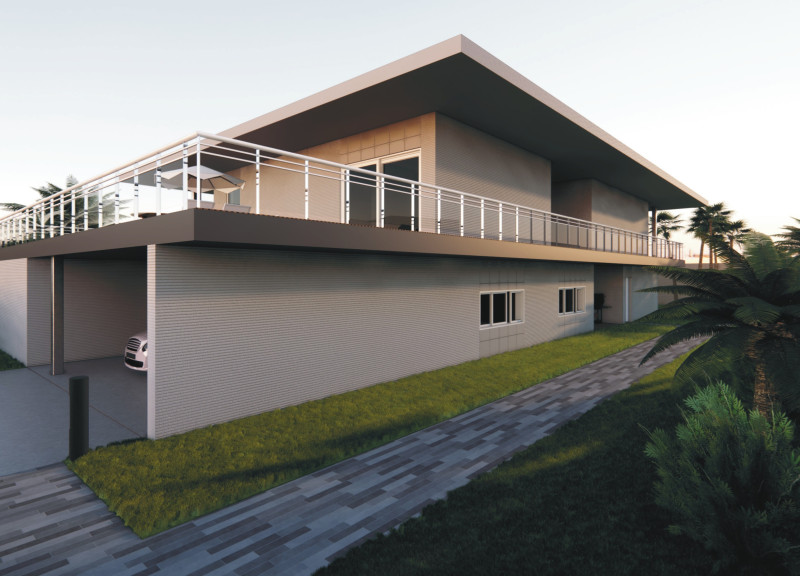5 key facts about this project
At first glance, the project showcases a purposeful design that reflects the principles of sustainable architecture. Carefully selected materials play a crucial role in both the integrity and character of the building. The exterior features a combination of locally sourced timber and reinforced concrete, blending natural and industrial elements to form a cohesive façade that resonates with the context. Large windows provide ample natural light, enhancing the indoor environment while promoting energy efficiency. These openings are strategically placed not only to maximize views but also to encourage cross ventilation, minimizing reliance on mechanical systems.
The layout of the project is a significant element that deserves attention. It includes communal spaces that foster social interaction, reinforcing the sense of community that is central to the design philosophy. For instance, the central courtyard acts as the heart of the project, functioning as an outdoor gathering space that hosts various activities. The arrangement of buildings around this courtyard ensures that each unit receives direct access to this shared amenity, effectively blurring the lines between private and public spaces. This design approach encourages residents to engage with one another while enjoying the benefits of outdoor living.
Attention to detail is evident throughout all parts of the project. The interior spaces have been meticulously designed to accommodate the diverse needs of the occupants. This includes functionality-enhanced kitchens, flexible living areas, and the incorporation of durable materials such as low-VOC paints and sustainable flooring options. These choices reflect a commitment to creating healthy living environments. Additionally, the integration of smart home technology allows residents to control various aspects of their homes with ease, further contributing to their comfort and convenience.
The architectural design embraces the surrounding landscape, enhancing its natural beauty and offering stunning views. The project is situated in an area known for its picturesque scenery, and the design cleverly frames these views. Outdoor terraces and balconies amplify this relationship, allowing residents to experience their environment fully. The careful consideration of context and local culture informs the architectural language, marrying the building with its geographical location.
Unique design approaches are evident throughout, particularly in how the architecture addresses local climate. The structure incorporates overhangs and shading devices, which not only provide protection from sun and rain but also enhance the overall aesthetic. The sustainability measures extend beyond materials; the design captures rainwater for irrigation and includes native plant landscaping that requires minimal maintenance, thereby contributing to local biodiversity.
In terms of structural organization, the project demonstrates a clear understanding of flow and accessibility. Circulation is designed to be intuitive, with well-marked pathways and accessible entries that promote ease of movement throughout the spaces. This thoughtful design enhances the user experience, making it easier for occupants to navigate their environments, whether they are visiting a commercial space or returning home.
Overall, the project stands as an example of how contemporary architecture can reflect modern living values while remaining attuned to environmental considerations. It achieves a sophisticated balance between form and function, demonstrating that practical needs do not have to compromise aesthetic quality. To fully appreciate the intricacies of this architectural accomplishment, readers are encouraged to explore the project's presentation. Delve into the architectural plans, architectural sections, architectural designs, and architectural ideas that bring this vision to life, revealing the full depth of thought that has gone into crafting this exceptional project.


























